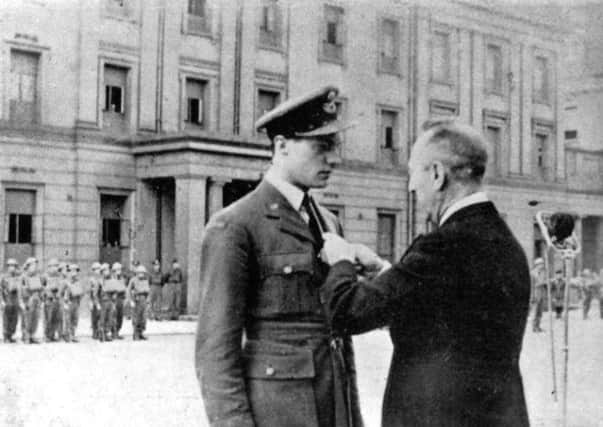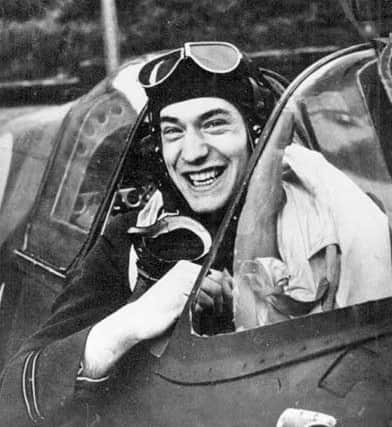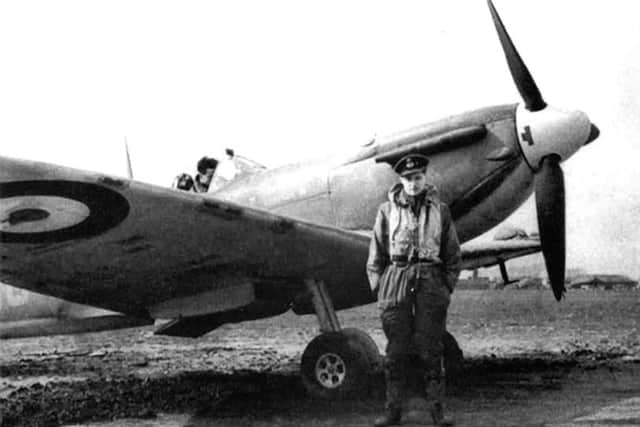Medal for flying ace who defied his orders
This article contains affiliate links. We may earn a small commission on items purchased through this article, but that does not affect our editorial judgement.


He was a young Belgian fighter pilot in the 4th Squadron of the 2nd Regiment d’Aéronautique.
The squadron was equipped with obsolete Fiat CR 42 biplanes. When the Germans overran Belgium, Offenburg and his colleagues were forced to retreat, flying from airfield to airfield and fighting a losing battle against the Luftwaffe’s superior Messerschmitt Bf 109s.
Advertisement
Hide AdAdvertisement
Hide AdBy 17 June when France capitulated, Offenburg had shot down one Dornier Do 17 bomber and damaged another. Belgium had also surrendered and his orders were to remain where he was and cease fighting.


Offenburg, known always as ‘Pyker’ because he originated from Brussels, decided to fly with another Belgian pilot, Alexis Jottard, first to Corsica and then to Algeria. They then made their way to Casablanca where they sailed with a group of Polish in a cargo ship first to Gibraltar and then to Liverpool where they arrived on 16 July 1940.
Pyker was accepted into the RAF as a pilot officer and was posted to the Hurricane equipped No 145 Squadron based at Drem near Edinburgh.
The squadron had only recently moved to Scotland from Westhampnett, RAF Tangmere’s satellite airfield. In spite of being reluctant to join in the squadron parties, he was quickly accepted.
Advertisement
Hide AdAdvertisement
Hide AdAlways anxious to get on with the war, Pyker often found himself bored when on the ground and would never miss an opportunity to get airborne. Whilst in Scotland he shared in damaging a Do 275 before the squadron was moved back to Tangmere on 10 October 1940.


Here Pyker destroyed two Bf 109s in November and a Heinkel He 111 in December. Away from the airfield he would pass his time going into Chichester to the cinema or to the Old Ship Club at Bosham, a favourite haunt of Tangmere’s fighter pilots.
In mid February, the squadron’s commanding officer, Squadron Leader Leather, invited his pilots for a dinner at the Spread Eagle hotel in Midhurst. No 145, now equipped with Spitfires, was one of the three squadrons in the Tangmere Wing commanded by the legendary legless ace, Wing Commander Douglas Bader.
Pyker, with no home to go to when on leave, was introduced to the Lydons, a Chichester catholic family who lived at 32 Melbourne Road. They looked after him as if he was their son.
Advertisement
Hide AdAdvertisement
Hide AdIn May 1941, the squadron was moved to nearby Merston because of the night bombing of Tangmere, and a new squadron leader was appointed; the tough Canadian Stan Turner who had fought with Bader during the Battle of Britain.


On 5 May Pyker, detailed for a local training flight over Tangmere, ignored orders and set course for the French coast where he engaged two He 60 seaplanes, one of which he quickly dispatched. On returning to Tangmere he expected to be arrested but Turner recommended him for the Distinguished Flying Cross.
On 16 June after 230 operational sorties with 145, Pyker was posted to No 609 Squadron at Biggin Hill to join a Belgian section within the unit. The day after his arrival he received official notification of the award of the DFC, the first Belgian to be so awarded.
On 7 July, whilst chasing a Bf 109 in a dive, he saw the enemy aircraft fail to pull out and crash into the sea – he had not fired a shot. In early August he was promoted flight lieutenant and on the 19th led 609 into battle, the first time a Belgian had commanded an RAF squadron.
Advertisement
Hide AdAdvertisement
Hide AdIn the autumn the squadron was moved to Digby in Lincolnshire and on 22 January 1942 Pyker whilst practising combat manoeuvres over the airfield was involved in a mid-air collision with a Spitfire from another squadron.


His Spitfire went into a vertical dive and Flight Lieutenant Jean Offenburg DFC, Belgian Croix de Guerre was killed in the crash.
This article, written by David Coxon, Tangmere Military Aviation Museum’s Curator, is the 34th in a series of monthly articles on the people of RAF Tangmere. More information on the Museum, including opening times and entry prices can be found on our website: www.tangmere-museum.org.uk
Don’t miss out on all the latest breaking news where you live.
Advertisement
Hide AdAdvertisement
Hide AdHere are four ways you can be sure you’ll be amongst the first to know what’s going on.
1) Make our website your homepage at www.chichester.co.uk/
2) Like our Facebook page at www.facebook.com/ChichesterObserver
3) Follow us on Twitter @Chiobserver
4) Register with us by clicking on ‘sign in’ (top right corner). You can then receive our daily newsletter AND add your point of view to stories that you read here.
And do share with your family and friends - so they don’t miss out!
The Chichester Observer - always the first with your local news.
Be part of it.